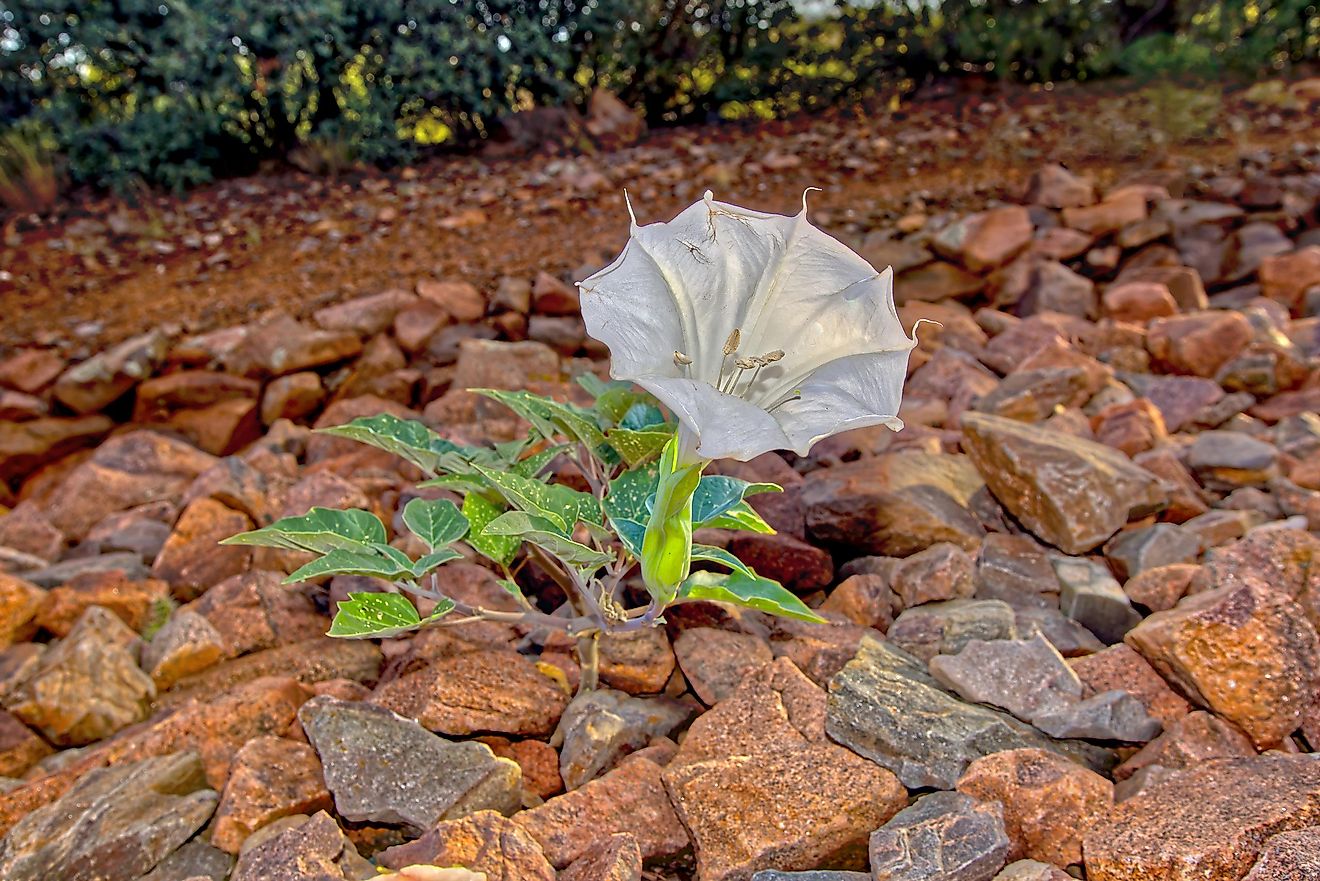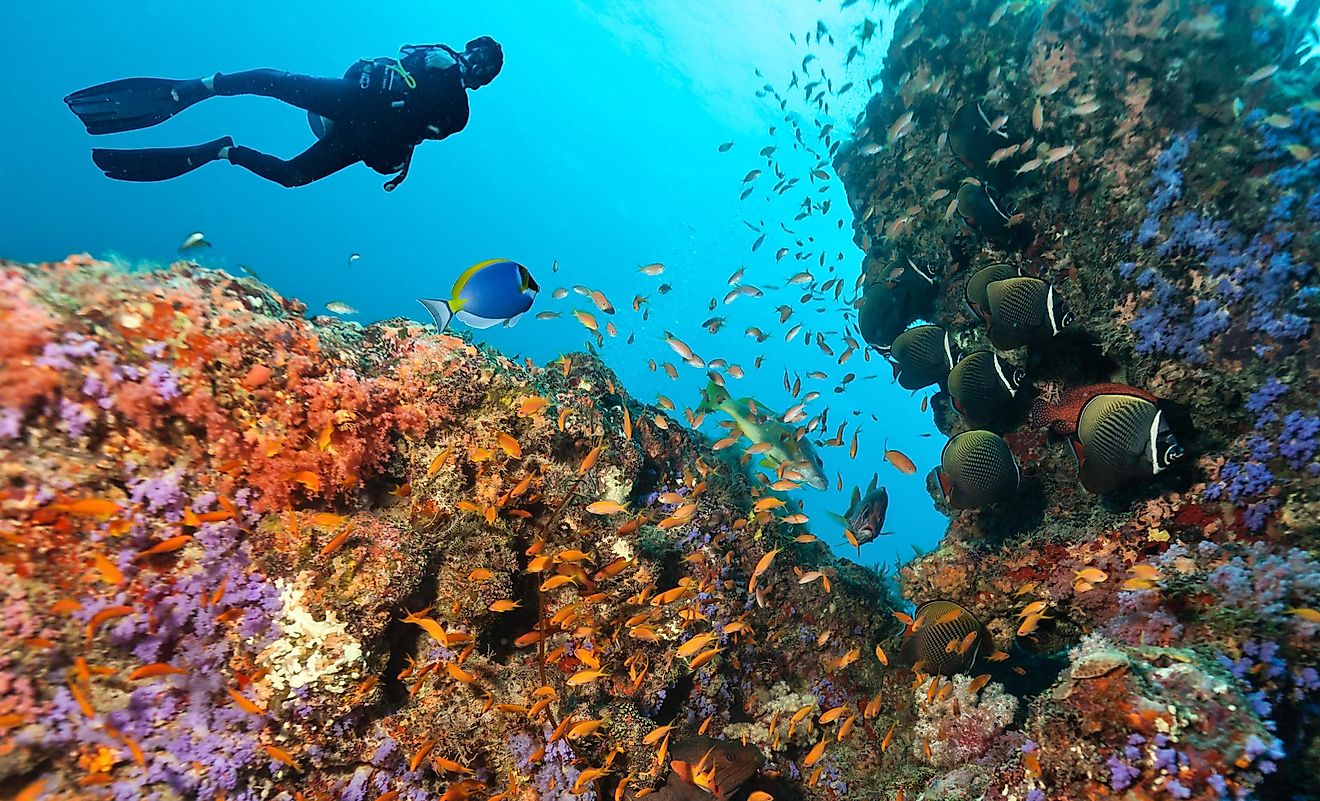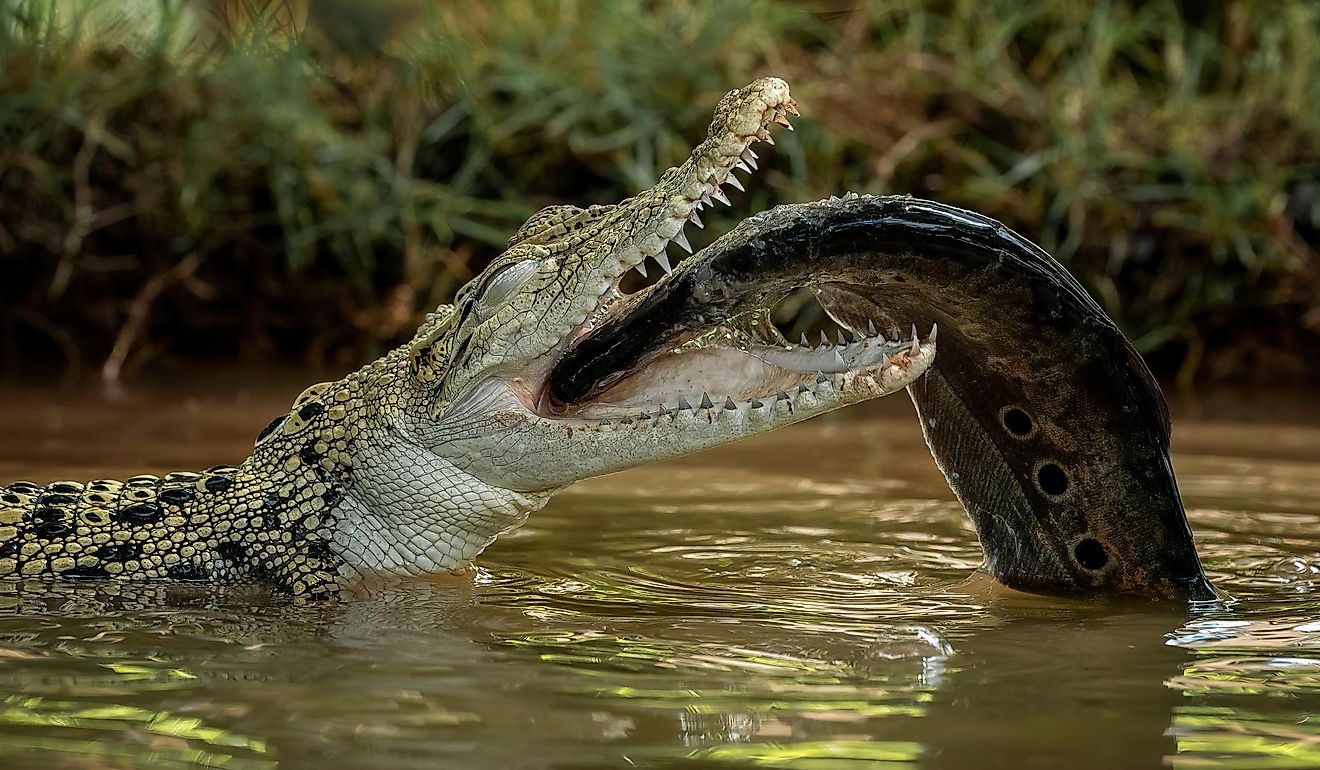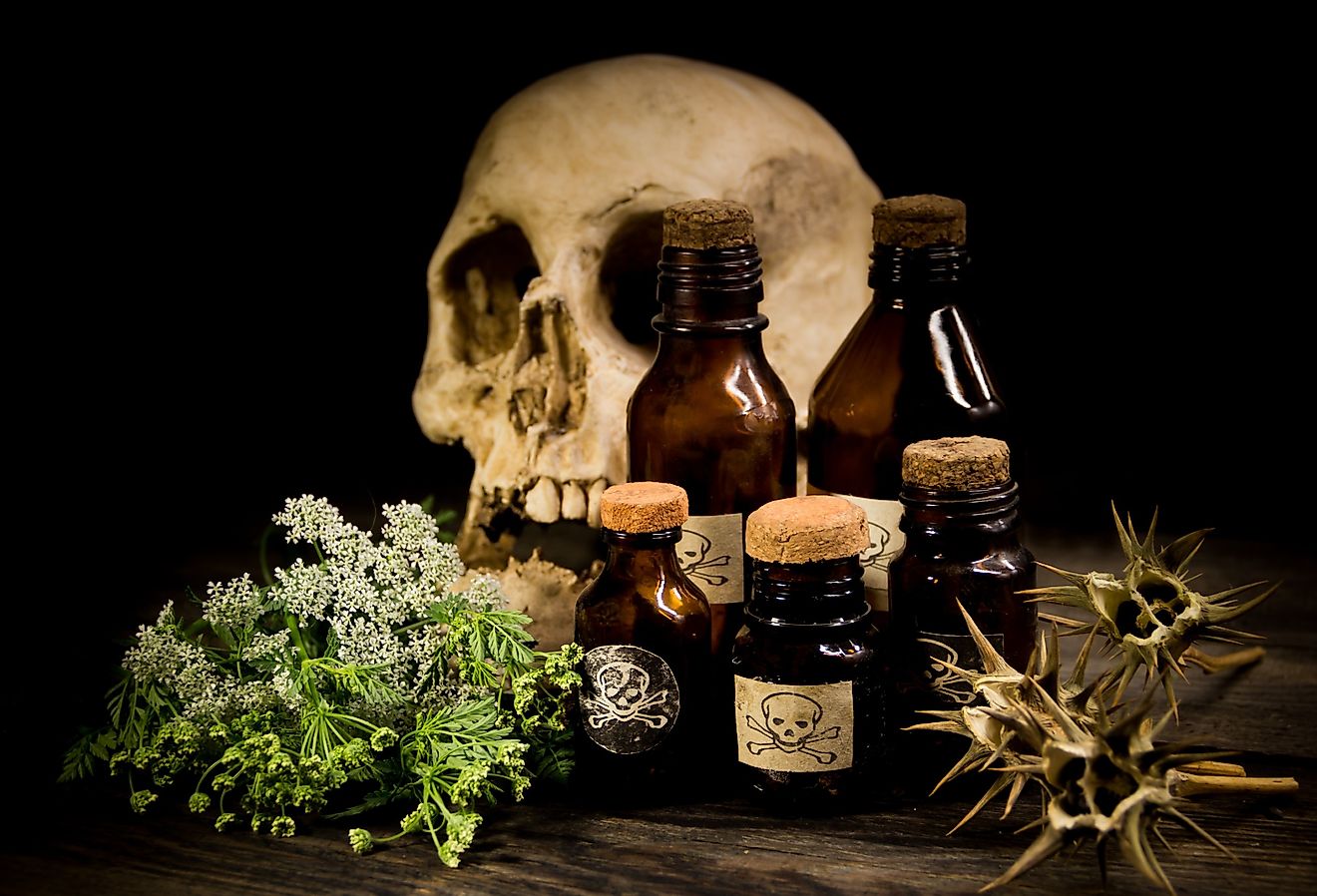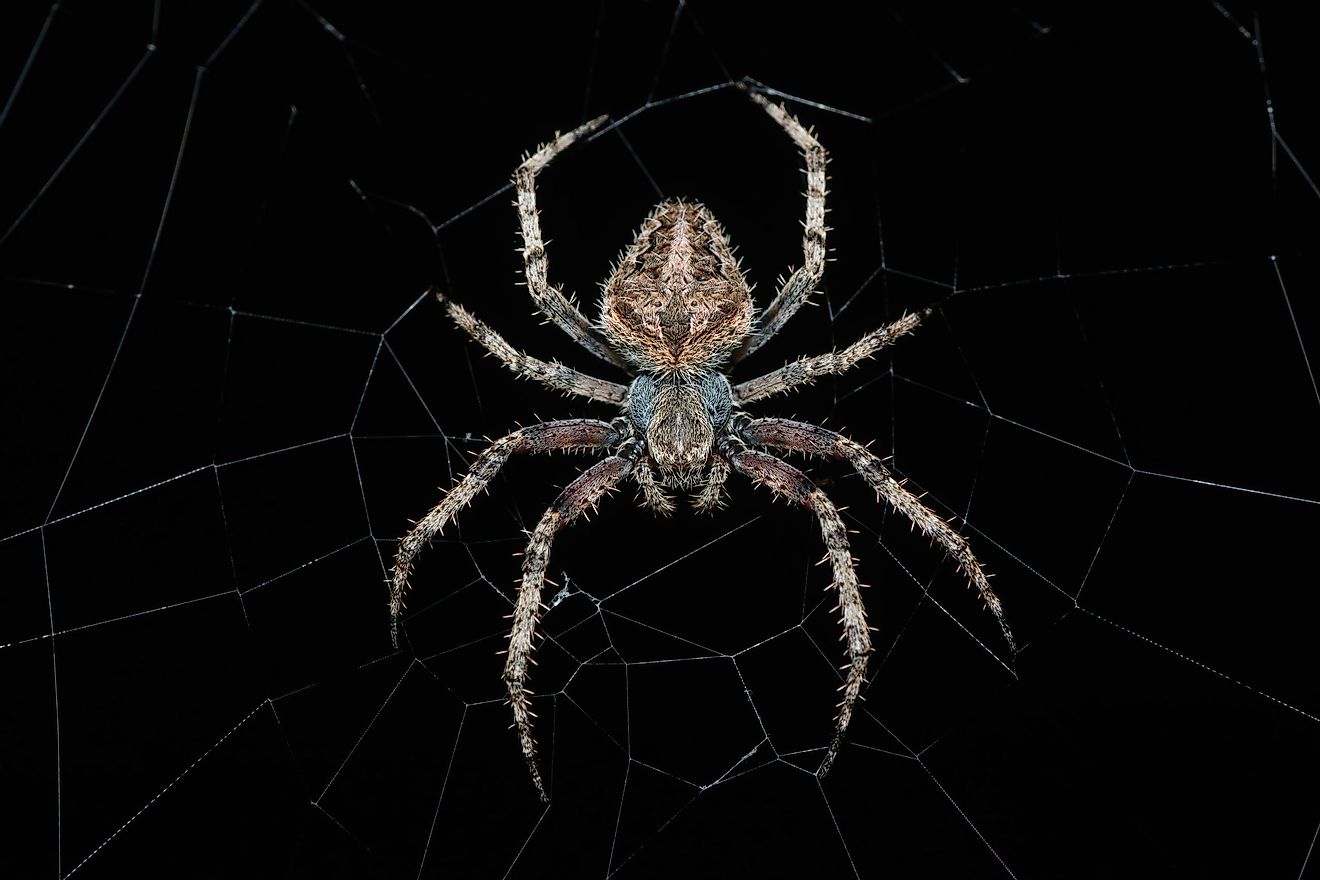
10 Most Dangerous Plants in Florida
Florida is revered for its fantastic beaches and spectacular sunsets. But what some may not know is that nature lovers also find respite in its magnificent greenery, consisting of more than 4,700 species of native and naturalized plants. At least 3,200 native plant species and around 230 are endemic to the Florida landscape.
Unfortunately, many first-time visitors and tourists are unfamiliar with Florida's vast plant life. This increases the risk of coming into contact with dangerous or toxic plants. In rare cases, several toxic plants in Florida can cause anything from mild skin irritation to death. The following are ten of the most dangerous plants to avoid when visiting the Sunshine State.
Angel’s Trumpet (Brugmansia)

Angel’s trumpet (Brugmansia) is a gorgeous ornamental plant that will brighten the drabbest garden. This dramatic flowering plant grows well in frost-free environments and can even thrive in greenhouses. Angel’s trumpets are evergreen and become incredibly fragrant at night. Their colors include green, red, orange, yellow, pink, cream, and white.
Despite their beauty, the flowers and leaves of angel’s trumpets are poisonous. Eating any part of these plants can cause terrifying hallucinations, tachycardia, and memory loss. In severe cases, ingestion can lead to death due to the presence of Alkaloids, including atropine, scopolamine, and hyoscyamine.
These plants are not illegal to grow, even though some states have implemented laws against growing hallucinogenic plants for consumption. However, the Drug Enforcement Administration (DEA) advises people to avoid the recreational use of any hallucinogenic plant.
Dumb cane (Dieffenbachia)

Despite the name, dumb canes (Dieffenbachias) are stunning herbaceous plants that are native to the tropical regions of the United States. People love growing dumb canes as house plants because they tolerate low light well and, with large leaves, can make any room look pretty. However, many overlook the dangerous side of this often unnoticed plant.
A good tell of its dangerous nature is its name, dumb cane, which comes from the fact that chewing the stem can cause temporary speechlessness. This is because the plant’s cells contain raphides, which consist of calcium oxalate. If someone ingests the stem, the raphides can quickly cause mucous membrane irritation, leading to severe throat and tongue inflammation. If the sap accidentally enters the eye, it can cause swelling and even temporary vision loss. Moreover, Dumb canes are poisonous to cats, but fortunately, not deadly.
Angel’s wings (Caladium)

Around 1,200 acres of land in Florida is reserved for angel’s wings (caladiums). These plants are grown commercially and were first discovered in the Amazon River basin. Also known as Angel’s Wings, every part of the Caladium plant is toxic, from its heart-shaped leaves to its stem. If chewed or swallowed, caladium plants cause a burning sensation in the mouth. People may salivate excessively and experience swelling lips, tongue, or throat. When ingested, they can cause severe gastric inflammation. Even the sap is toxic and causes intense itching and burning of the skin. Moreover, Caladium plants are poisonous to pets and may cause drooling, vomiting, pain, and decreased appetite.
Pokeweed (Phytolacca americana)

Pokeweed, or American pokeweed (Phytolacca americana), thrives in woodlands throughout Florida. It self-seeds, springing up everywhere the sun shines on disturbed sites. Pokeweed leaves are bright green, and the stems are reddish purple.
Like the other plants on this list, pokeweed is poisonous to humans. High traces of poison reside in the stems, roots, and leaves, while small amounts are also found in the fruit. Ingesting pokeweed can lead to severe symptoms within six hours. These symptoms include seizures, hemorrhagic diarrhea, unconsciousness, rapid pulse, and difficulty breathing. If ingested, getting to an ER for immediate medical attention is vital. As the fruit is not as toxic, some people have eaten the berries after cooking them twice, but this is not recommended.
Chinaberry Tree (Melia azedarach)

Chinaberry trees (Melia azedarach) make for typical foliage in the Sunshine State. These invasive shade trees grow fast when young and can reach heights over 40 feet. They thrive in marshes and forests, where they tend to displace native plants. This plant does not have natural diseases or insects associated with it, which is why it grows so quickly.
Its dark green leaves and lilac flowers are also deceptive because the Chinaberry tree is highly toxic to humans and small mammals. Every part of the Chinaberry tree is poisonous, especially the fruit, and consumption of it can lead to diarrhea, vomiting, difficulty breathing, and, in severe cases, paralysis. Regarding animals, Songbirds love Chinaberry fruit, but they also experience short-term poisoning.
Poison Hemlock (Conium maculatum)

Poison hemlock (Conium maculatum) is a very unique plant on this list. Also known as spotted cowbane, this shrub forms part of the carrot and parsley family and grows in Florida’s swamps, riverbanks, and marshes. It is important to know what this plant looks like because it is incredibly toxic to humans, although it looks harmless at first glance. The plant features small white flower umbels on tall stems with purple stripes. It also has compound, fern-like leaves and is easily confused with other aquatic plants.
Hemlock ingestion leads to vomiting, seizures, respiratory failure, and even death. There is no antidote for this poisoning, and it can cause severe symptoms in as little as 15 minutes after ingestion. If you believe you may have ingested any part of this plant, call emergency services or go to the nearest emergency center, whichever is faster. The plant is so toxic that it is known for being similar to the hemlock that killed Socrates, the Greek philosopher.
Oleander (Nerium oleander)

Oleander (Nerium oleander) is a beautiful evergreen shrub tree with bright pink flowers. Florida residents love this shrubby tree because of its beauty and because it grows in nearly any type of soil. However, while it is beautiful, this plant is one of the most dangerous in the state.
This is because all parts of the oleander plant are poisonous, and even just touching the sap or ingesting the leaves and flowers can cause severe symptoms. These include convulsions, irregular heartbeat, vision disturbances, and respiratory distress. Even just burning the plants can be toxic and irritate the skin and lungs. Fortunately, oleander poisonings are rare because the flowers and leaves taste terrible. That said, anyone who suspects they have been in contact with oleander or ingested it should get to an ER immediately.
Rosary Pea (Abrus precatorius)

The rosary pea (Abrus precatorius) is a non-native herbaceous flowering plant invasive to parts of Florida. It looks like a woody vine with oval leaves and pea-like flowers that are either white, violet, or pink. The seeds are bright red with a black spot at their tips. These vines are often seen in pinelands and disturbed sites, taking over other plants like shrubs and small trees.
This plant is on this list because of its high abrin content, which is a highly poisonous protein for humans. Even just a single seed can cause death. However, inhaling powder from ground seeds causes most cases of rosary poisoning. At the same time, birds do not seem affected, as they carry and disperse the seeds. That said, for humans, even if you do not ingest or inhale rosary pea, but it comes into contact with your skin, you should wash the affected area with soap and warm water. Poisoning symptoms include diarrhea, vomiting, nausea, dehydration, low blood pressure, hallucinations, and organ failure. Surprisingly, this plant was once used in traditional medicine (some still use it), while some create rosaries and jewelry from the seeds.
Castor Bean (Ricinus communis)

The castor bean (Ricinus communis) plant is non-native to Florida and is considered invasive. It has not yet displaced any native Florida plants but is a threat. Castor bean plants have large leaves and strange-looking seed pods. They can grow along disturbed areas like roadsides, fields, and riverbeds. Also called shrubs and small trees, castor bean plants can grow to around 40 feet tall in warmer climates.
Castor bean seeds naturally contain a poison called ricin. This is one of the deadliest natural poisons and is around 6,000 times more poisonous than cyanide. Ricin is so toxic that the U.S. military once experimented using it as a warfare agent. If the seeds are chewed and swallowed, it causes acute gastroenteritis that can be fatal.
Even inhaling ricin power can cause difficulty breathing, heavy sweating, and pulmonary edema. The skin may turn blue, and low blood pressure may follow. In severe cases, a person will suffer fatal respiratory failure. Death can occur within 36 to 72 hours, and there is no antidote for ricin poisoning, so it is critical to avoid exposure at all costs.
Manchineel Tree (Hippomane mancinella)

Finally, there is the exceptionally dangerous manchineel tree (Hippomane mancinella). Native to Florida, many areas worldwide mark this coastal plant with a red painted band around its trunk to warn people to stay away. Some have no paint markings, so it is crucial to identify these trees that grow on beaches and in other saltwater sources.
Manchineel tree fruit and leaves resemble apple trees, which is a massive problem for tourists and visitors who do not know the difference. Every part of the manchineel tree is poisonous, including leaf sap, stems, and fruit. The sap can cause incredibly painful blisters on the skin, while ash from burning the tree bark can cause irritation and blindness. The worst situation comes from eating the delicious-looking fruit, which can often be fatal. It is simply safer to stay away from these trees, even if you are unsure whether it is an apple tree or manchineel. If someone is exposed to any part of the manchineel tree, they should seek medical help immediately.
Conclusion
Other toxic plants in Florida include stinging nettle, poison ivy, and wild lime, among others. It is important to familiarize oneself with the common poisonous plants and trees in their area, as some may even be in their garden. If you find some of them in your garden, ask a garden expert to remove them. If you come into contact with these plants, seek medical attention. Residents can enjoy life in the Sunshine State without any unpleasant surprises by staying aware of the potential dangers of toxic Florida plants and trees.


